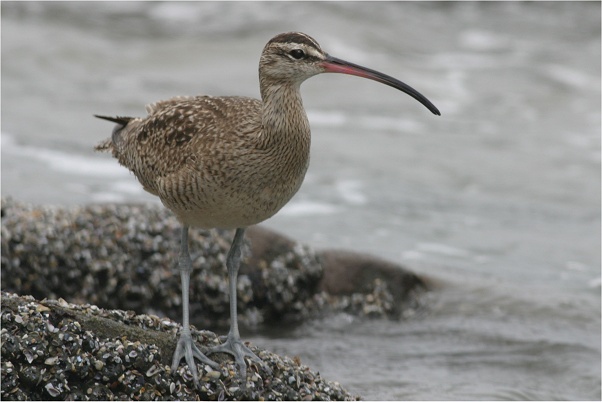
Date: 2004-03-21
Lens: Canon 400mm F5.6

 Whimbrel
Numenius phaeopus
Whimbrel
Numenius phaeopus
 Description
DescriptionThis large shorebird can be found both along the shore and the interior of the continent. This bird is still found in large numbers because of its cautious behavior and the remoteness of its Arctic breeding location. They feed on aquatic invertebrates and in lesser amounts on fruit.
Brown upperparts with light and dark spots. White belly and undertail coverts. Brown streaks on neck and chest. Pale face with dark eyestripe. Dark crown with a pale stripe through it. Long, downward curved bill. The bill is black with an orangish base. Dark legs. Sexes similiar. 15 to 17 inches in length.
Coastal beaches, mudflats, and coastal salt meadows.
 Nesting
Nesting4 olive eggs with brown markings and a 27-28 day incubation period. Fledging occurs 35-42 days after hatching. The nest is depression in a mossy area or a sedge clump.